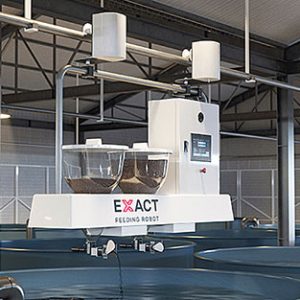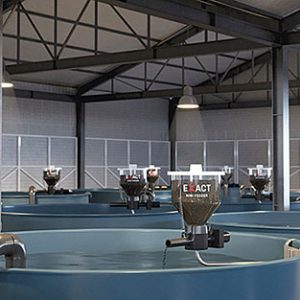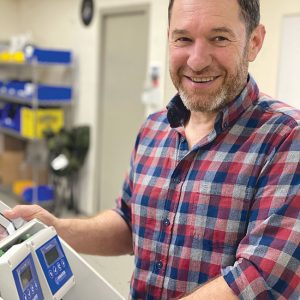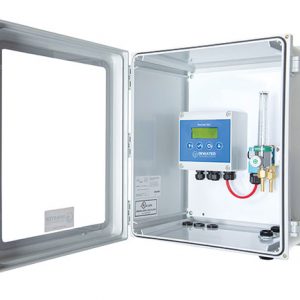
Features
Business Management
Technology
7 ways to safely deploy new systems for your hatchery
May 7, 2021 By Nestor Arellano
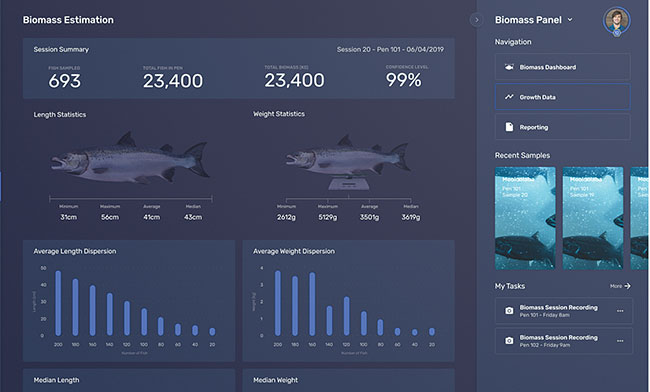 Camera and sensor technologies can capture a variety of data for analysis but can also streamline operational processes.
Photos: Innovasea Systems Inc.
Camera and sensor technologies can capture a variety of data for analysis but can also streamline operational processes.
Photos: Innovasea Systems Inc. AI, IoT, ROV, M2M. These are some acronyms that have been hurled around in the corporate world, which in recent years have made their way to the waters of the aquaculture industry.
Have you been thinking of betting your money on deploying a high-tech equipment in your hatchery facility? Here are a few pointers that can help you cut the risks associated with high-tech adoption, stack the odds in your favour and protect the old ROI.
There’s no doubt about it. High tech is hot. For instance, some studies estimate that the precision aquaculture market (the concept of using control-engineering to monitor, control and document biological processes in fish farms) will be worth nearly US$800 million by 2024.
Look before you leap
What’s driving this growth? Consider these two examples.
When automated feeding systems are integrated with monitors and other sensors, so-called smart feeding systems are created. These systems can “learn” the feeding behaviour of fish thereby avoiding overfeeding or underfeeding, which improves fish health and helps operators achieve substantial cost savings at the same time.
Monitors and cameras, on the other hand, not only capture data on factors such as fish density, fish count, pump speeds, they also streamline the fish grading process. What’s more, the systems can now be controlled using mobile devices. The data collected can be stored in the cloud for later analysis or future reference. These systems reduce labour cost, increase efficiency, reduce fish stress, and boost yields. The benefits sound so enticing.
However, even smart systems experts recommend a measure of caution to ensure you make the right investment, avoid or minimize disruption of your operation, and protect the health of the fish.
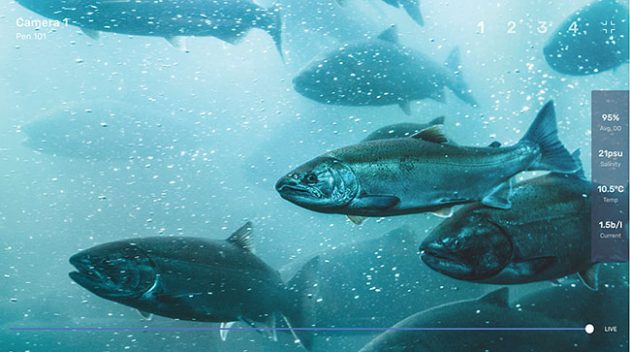
1. Determine what technology your operation needs
Hatchery operators want to know what latest technologies they should adopt.
However, “all hatcheries are pretty unique,” says George Nardi, vice-president of aquaculture services at Innovasea Systems Inc. “In terms of how they implement new technology, it’s really a case-by-case basis.”
Innovasea is an end-to-end aquaculture solutions company. The company designs and supplies recirculating aquaculture systems (RAS), develops open ocean and land-based feeding systems, environmental monitoring equipment and other monitoring software solutions.
Determine your need. It could be to increase production, improve fish health, or enhance water quality. But, “If it’s not broken, don’t fix it,” Nardi says.
Technology often introduces new challenges for facilities, says Gordon Jeffrey, CEO of Aqualife Services Ltd., a firm that specializes in fish vaccination.
“RAS technology has led to major improvements of smolt production and egg-to-plate farming,” says Jeffrey. “However, this has often meant an increase in stocking densities resulting in higher risks of disease outbreaks and water quality issues.”
He recommends considering these key factors before an implementation:
- need
- benefit
- cost
- maintenance
- usability
- ongoing costs
- technology readiness
2. Fish come first
Smaller fish are more susceptible to stresses caused by noise, temperature and water quality fluctuations associated with hatchery repairs and retrofits. Nardi suggests that operators strive to minimize disrupting the fish when installing equipment.
“Installing improved oxygen probes are good,” he says. “But if the implementation is at a larval facility, it’s going to be difficult. That’s why most operations time the installation during a system-wide dry-out period.”
3. Find user-friendly tech
There’s no denying that today’s technology has advanced to a point where the average user is often at a loss when it comes to understanding how the tools, he or she uses work, says John Holder of JLH Consulting. The Courtenay, B.C., firm designs systems, creates biological models and even offers mentoring programs for fish farms that mainly rely on RAS.
“Working with our clients, we see a trend towards more user-friendly tech – something that is easy to operate and to trouble shoot,” Holder explains. “When your facility is away from the city, you want your staff to be able to handle it just in case something goes wrong, and the support technician can’t make it right away.”
“If CO2 suddenly spikes, oxygen becomes hyper critical, and with juvenile fish you have very little leeway until they are negatively impacted,” he says. “Mere minutes matter.”
Unfortunately, aquaculture equipment has become very complicated for most users.
Tech providers should be able to provide customers with proper training on the equipment and even ensure top-up instructions on system upgrades.
A good guide, according to Holder: “If it’s something that can be explained to me like I was a 12-year-old and it’s something I can learn to operate and trouble shoot, then it’s good.”
4. Timely tech support
Make sure that your tech provider has available technicians that can travel to your location and have tech support personnel that can be contacted by phone or online means. “When your facility is out of the way or you’ve purchased equipment from a foreign supplier, they should be able to send out a technician to you when there’s an emergency,” says Holder.
5. Invest in people
Cutting edge technology is fine, but a hatchery operation also requires sharp personnel, says Kurt Lang, chief technical officer of InWater Technologies, based in Campbell River, B.C. Lang, who co-founded the company with Stephanie King, has been in the aquaculture and water treatment industries for more than 20 years.
“There are exciting new innovations with automation, however they are not a substitute for highly qualified, curious and driven people with boots on the ground – this includes both farmers and suppliers,” according to Lang. “The key to new tools is to have staff trained properly and to select equipment that comes with excellent support and customer service.”
6. Pay attention to data
More and more water quality parameters are being continuously monitored by sensors. This data can be a gold mine of information that can help guide decisions to help improve fish health, cut down cost of production and bolster productivity. Operators need to be diligent not only in collecting data but also routinely examining and interpreting them to determine how the collected information can be used, says Lang.
7. Service agreements
Your service agreement with your provider is critical because it’s the defining documents that spell out what to expect from your vendor. It also lays out the metrics by which service rendered is measured, and the remedies or penalties expected in case things go wrong.
Finally, you also need to make sure you have staff buy-in on the new technology. If your personnel are not keen to learning how to use the new equipment, it’s very likely it’s not going to be used properly.
“What we don’t know we are afraid of, and what we are afraid of we don’t want to work with or maintain,” says Lang.
Print this page

